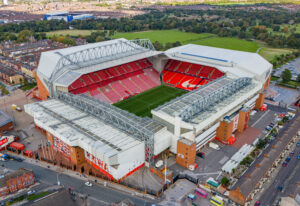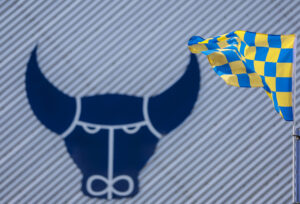One can never leave out Brazil when talking about legendary football players and World Cups. The flicks, tricks, and eye-catching displays of the players from the South American continent have been one of the reasons for football’s worldwide popularity. The exploits of players like Ronaldo, Rivaldo, Ronaldinho, Pele, Zico, Romario, and so on are talked about even years after their retirement.
But, does anyone remember the guy who dominated Brazilian football during the 1940s?
However long we may recall, most of us fail to name a player before the legendary 1958 World Cup-winning side. A little more keen followers would recall the 1950s World Cup side under Flavio Costa. A rare few may recall Arthur Friedenreich and the Brazilian side of the 1930s, but that’s about it.
So, who was Heleno de Freitas, the man who was called the cursed prince of Brazilian football?
Heleno de Freitas: Brazil’s Greatest to Never Play in the World Cup
Early Years
Heleno de Freitas was born in 1920 to a wealthy family in the Brazilian city of Sao Joao Nepomuceno. From a very young age, the Brazilian talents were evident. He was equally good in academics as in football. But, by the time he had done his graduation in law, the allure of football had become too big to resist.
Like many great Brazilians talents, Heleno was seen in the sandy Brazilian beaches juggling oranges and playing local tournaments. It was on one such occasion that the teenager caught the eye of a scout from local team Botafogo.
The Brazilian giants convinced the youngster to join their side and train with them. The talent was evident from the start; the youngster was already in the first team at the age of 17. It didn’t take long before he was a regular in the starting 11.
Without much fuss, he made his professional debut for Botafogo in 1939. It was a time when tensions across countries were at boiling point, and the world was on the brink of another war. The war and chaos would not holdback what the Brazilians were about to witness in the next few years.
Rise to Superstardom
Tall, elegant, and playing in a style uncommon in those days, Heleno was a star on the pitch. His film star features and jaw-dropping skills had made him a fan favourite. Fans chanted his name, sang songs, and danced in the stadium as the striker ran riot against the opposition defence. By the early 1940s, the Prince of Rio had established himself as one of the best players in Brazil.
It didn’t take long for the national team to take notice of the young boy who was dominating the opposition. Unlike his club debut, Heleno, amidst much fanfare, made his international debut against Uruguay in 1944. The striker would become a key player as Brazil won the Rio Branco Cup in 1947, the Roca Cup in 1945, and twice finished runners-up to Argentina in the 1945 and 1946 editions of the Copa America.
After finishing as the top scorer in the 1945 Copa America, Heleno was ready to showcase his skills on the world stage. The striker, in his prime and scoring truckloads of goals in domestic and international football, was sadly deprived of his chance following FIFA’s decision to cancel the 1946 World Cup.
Back home, the rising popularity made him a famous figure in Brazil. Men wanted to be like him and women wanted him. He was often a familiar figure in the famous Copacabana beach. The lavish lifestyle and party mind resulted in the striker being spotted into the small hours of mornings, even on matchdays.
Fall From Grace
The celebrity status, though, had a downward effect on his football career. The already cocky and ego-centric striker became even more unbearable to his teammates. Criticizing the less talented players in the squad for the team’s poor performances became a familiar sight.
The bubble finally burst in 1948. After nearly a decade and numerous disciplinary issues, Botafogo decided to pull the plug on their brash superstar. After an incredible 209 goals in 235 appearances, Heleno was sold to Argentine giants Boca Juniors.
A goalscorer during the day and party-animal at night; but the Bohemian lifestyle soon started to take its toll on him. His move to Boca Juniors reaped modest results. The Brazilian struggled to adjust to the cold Argentine climate.
It didn’t take long for the Brazilian to start facing problems at La Bombonera. After refusing to remove his overcoat during a training session, Heleno decided to end his time in Argentina. With a return of just seven goals in 17 appearances, the striker returned to Rio – this time joining Botafogo’s rivals, Vasco da Gama.
It was with Vasco da Gama that Heleno would win his only State Championship. Despite scoring 19 goals in 24 appearances for the club, all was not well for the striker at the Estadio San Januario. Heleno was involved in several training ground bust-ups with players and the manager. In one such scenario, he carried an empty gun into the stadium pointed to manager Flavio Costa’s head. That would remain his final act as a player for the Almirante.
Later Years
By now it was evident that the former poster boy of Brazilian football was just a pale shadow of his former self. His lifestyle and the onset of syphilis had started to take a toll on him. He further went down in chaos after his wife left him for a former teammate. Alone and short of money, Heleno decided to move abroad to join Atletico Junior in the rebel Colombian league.
Despite being past his prime, Heleno still garnered hopes of representing Brazil in the World Cup. But, by the time the 1950 tournament came about in his home soil, Heleno was a shadow of himself. The appointment of his former manager, Flavio Costa, as the 1950 Brazilian manager dwindled his hopes of playing in the World Cup.
With his World Cup hopes dashed, Heleno returned to Brazil – this time joining giants Santos. The recurrence of the same old issues resulted in him being released from the club without making a single appearance.
Heleno would have one last final hurrah. At 31, tired and worn out, he signed his final professional contract with Club America in 1951. He would only play one match for the club, but would finally make his first and only appearance at the Maracana.
Much like his career, Heleno’s Maracana experience would remain short-lived. After playing just 25 minutes, the striker received his marching orders after clashing with his teammates. It would remain the last time the striker set foot on the football as a professional player.
Death
With his mental and physical state rapidly decreasing, Heleno de Freitas spent his last remaining years out of the limelight and inside a Barbacena sanitorium. As destiny would have it, Heleno would live to see his beloved Brazil lift the World Cup in 1958. A year later, and at the age of just 39, the former poster boy unceremoniously left the world of mortals after years of suffering from syphilis.
Heleno is one of the greatest players ever to play for the Selecao. He still remains one of the rare few with more than a goal ratio in international matches after scoring 19 goals in his 18 international appearances. To date, the striker remains the fourth-highest goalscorer in the history of Botafogo.
Many still believe that if Heleno was in the 1950 side, Brazil would not have suffered the shame of the Maracanazo.
Main Photo





